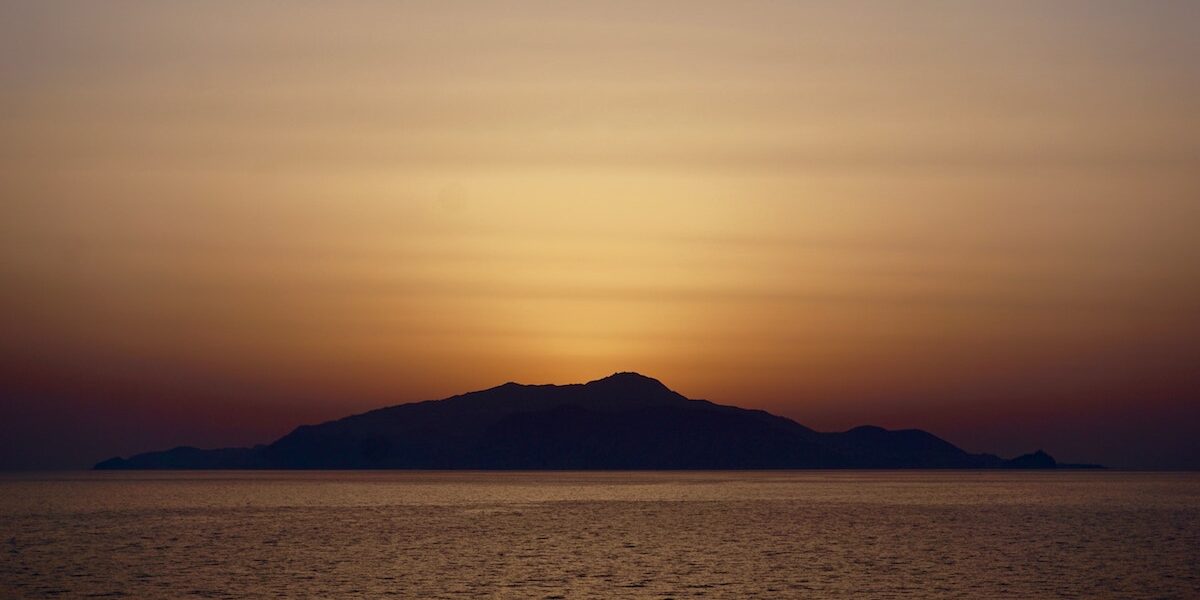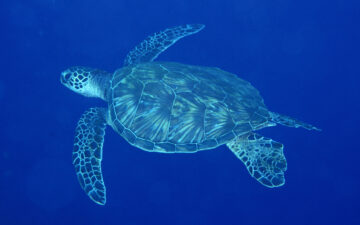Guest blog, submitted by Debbie Greenberg
This post originally appeared on Playa Viva’s website. Playa Viva is a Friends of Fund within The Ocean Foundation and is led by David Leventhal.
One week ago I was fortunate enough to accompany members of the La Tortuga Viva turtle sanctuary on one of their nightly patrols of the beach near Playa Viva and beyond. They search for sea turtle nests in order to protect the eggs from poachers and predators by moving them to their nursery for safekeeping until they hatch and are released.
It was very interesting to see first-hand the work done by these local volunteers and better understand the effort they make every night and early morning (one patrol is from 10 p.m. to about midnight and another begins at 4 a.m.) The stars over the ocean were incredible as we bounced along on the group’s one all-terrain vehicle. Elias, head of Tortuga Viva and my guide for the night, explained how to look for turtle tracks and nests. We were unlucky, though: we found two nests, but unfortunately human poachers had beat us to them and the eggs were gone. We also saw 3 dead turtles at different points along the beach, most likely drowned at sea by the nets of fishing trawlers.
All was not lost, we were tremendously lucky because when we got back to the nursery enclosure at midnight a nest was hatching, and I actually got to see the baby turtles making their way up through the sand! Elias gently began moving sand aside and carefully collected handfuls of baby Olive Ridley turtles for release back to the ocean.
One week later, when we WWOOF volunteers arrived at Playa Viva for work at 6:30 a.m. we were told by the Playa Viva team that a turtle was on the beach right in front of the hotel. We ran pell-mell down to the sand, scrambling for our cameras, fearful of missing the sight; lucky for us the turtle wasn’t moving too fast, so we were able to watch as she lumbered back into the sea. It was a very big turtle (about 3-4 feet long) and it turns out we were really lucky because it was extremely rare Black turtle, called “Prieta” by the locals (chelonia agassizii).
The turtle sanctuary volunteers were on hand, waiting for her to go back to sea before protecting her eggs by securing them from predators in the sanctuary. It was so exciting to see the tracks she had made coming up the beach, the two false nests she had made (apparently a natural defense mechanism against predators) and her tracks going down. The volunteers who were there gently probed the sand with a long stick, trying to find the true nest, but were worried they might damage the eggs. One went back to town to fetch a couple of more veteran Tortuga Viva members while the other stayed here to mark the spot and guard the nest against possible interference. He explained that although they had been working on the patrol for a year, they had never found a Prieta nest before. Once senior patrol members Elias and Hector arrived, they knew right where to look, and began to dig. Hector is tall and has long arms, but he dug down until he was leaning almost completely into the hole before finding the eggs. He began to gently bring them up, two or three at a time; they were round and about the size of large golf balls. 81 eggs in all!
By this time they had an audience of all the WWOOF volunteers, a Playa Viva staff member who had brought down a shovel to help if necessary, and several Playa Viva guests. The eggs were placed in a couple of bags and taken to the turtle sanctuary, and we followed them watch the rest of the process of securing the eggs for incubation. Once the eggs were safely buried in their new, man-made nest 65 cm deep, we were given a ride back to Playa Viva.
The Black turtle is highly endangered; lucky for her to have concerned volunteers on hand to safeguard her eggs, and what luck for us to have witnessed a species so rare to be almost extinct.
About Friends of La Tortuga Viva: At the southeast corner of Playa Viva, a sustainable boutique hotel, an all-volunteer staff, comprised of members of the local community of Juluchuca, has set up a turtle sanctuary. These are fisherman and farmers who recognized the damage being done to the local turtle population and decided to make a difference. This group took on the name “La Tortuga Viva” or “The Living Turtle” and obtained training from the Mexican Department for the Protection of Endangered Species. To donate please click here.





